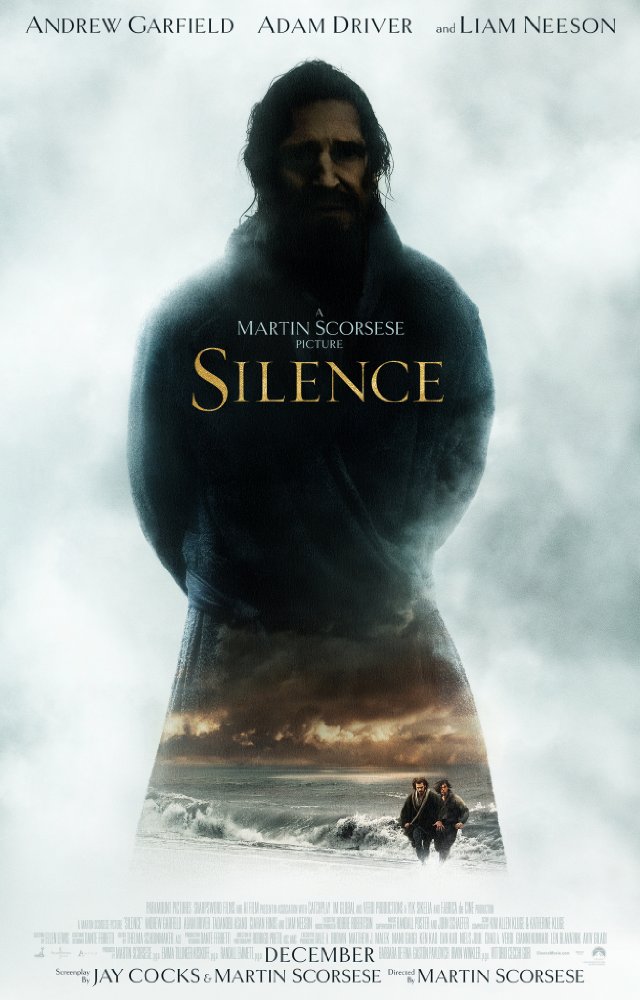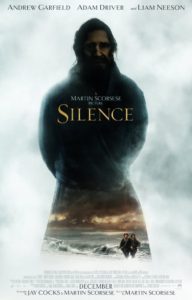

Grade: A-
Verdict: “Silence” isn’t superbly crafted, hindered by unnecessary length and bloat, but its ideas about religion and faith make up for it all, and more.
At first glance, “Silence” may seem like an odd fit in Martin Scorsese’s film repertoire. His most well-known films hinge on the bad guys and wackos of “Taxi Driver,” “Goodfellas,” and “Wolf of Wall Street.”
“Silence” may lack the frantic pacing and/or blood shed of these films, but still engages with the complexities of right and wrong when dealing with religion and faith, making it thoroughly Scorsese.
The film follows 17th century Jesuit priests Sebastião Rodrigues (Andrew Garfield) and Francisco Garupe (Adam Driver) as they search for their lost mentor, Father Cristóvão Ferreira (Liam Neeson) in a Japan hostile to missionaries and converts alike. His last letter suggests he has rejected the faith after being tortured by the Japanese “Inquisitor” (Issey Ogata), racked with guilt over the knowledge that his converts got the same treatment.
Driver, sadly, isn’t given enough screentime as the men eventually separate and the camera follows Garfield, who gives a decent performance, but one that I’d rather have seen played against Driver’s expressiveness. Nonetheless, it’s Garfield who we watch struggle as he both searches for Father Ferreira and tries to renew the Japanese church despite the torment that awaits the Christians should they be found out.
“Silence” is paced and quiet, punctuated by some traumatic, if not super bloody, torture sequences. It’s a movie about faith– specifically Rodrigues’– and mission work, about the intersection between following your beliefs and taking things too far.
I’m interested in how people responded to this film. The only real consensus I can find is that everyone thinks it’s beautiful, which is true– cinematographer Rodrigo Prieto’s misty landscapes and damp seasides feel as hopeless as they do tangible. Some found it overlong, which is also true (Garfield doesn’t need to spend so much time moping about).
But the great feat of “Silence” is not its filmmaking, it’s how it talks about religion and spirituality as two sides of the same coin, not one in the same thing. The film explores how they come together, engaging the pitfalls of one– the possible detriments of mission work, a facet of religion practice– without diminishing the other.
Mission work in “Silence” represents the threats of European meddling to the Japanese officials, who do terrible things in response, pushing religion aspects into political territory. Religion can be this complex, but faith need not be dirtied by outside interests.
Look to Rodrigues’ Jesus hallucinations for a clear example. How, the film asks, can a missionary not compare themselves on some level or another to Christ? Especially when one such missionary is marched into a city on the back of a donkey. And does that make mission work irreligious or selfish, especially when your converts may have to pay with their lives? What here is Religion and what here is Faith? Watching Rodrigues struggle with these distinctions is such a delight that I could ignore the film’s other problems.
All this is rendered and painstakingly answered in Rodriques’ plight. There’s enough of an answer for his particular situation to spark new ideas in our own (necessary) analysis. This is the beauty of “Silence.”
